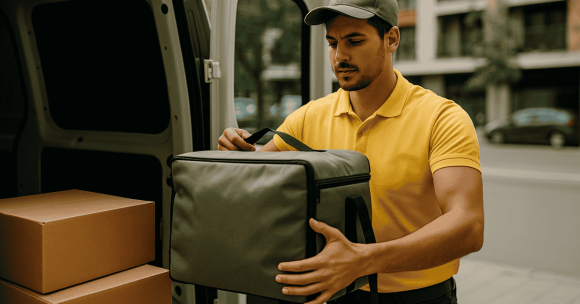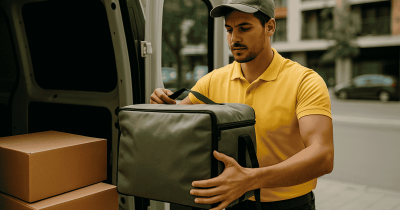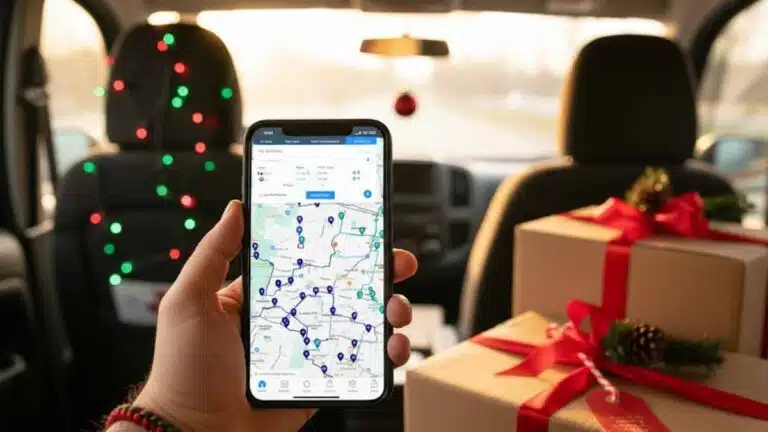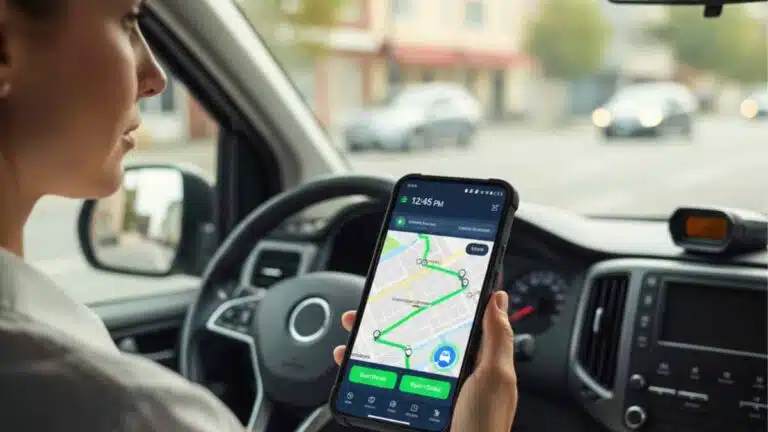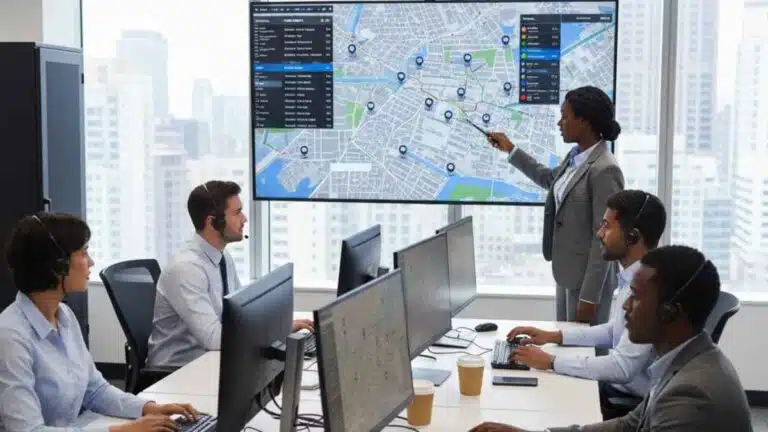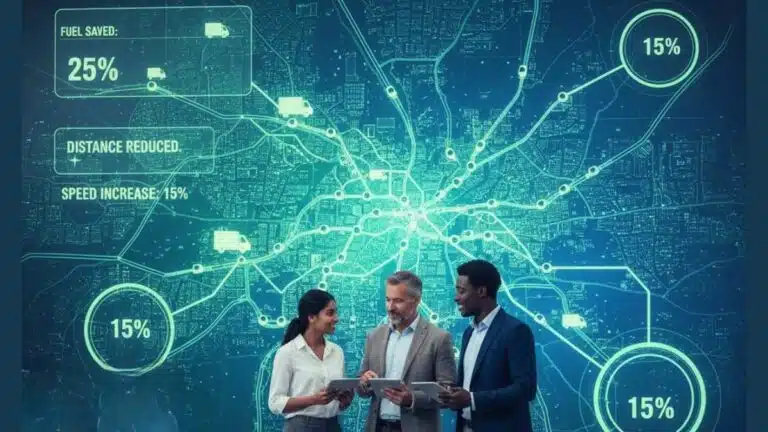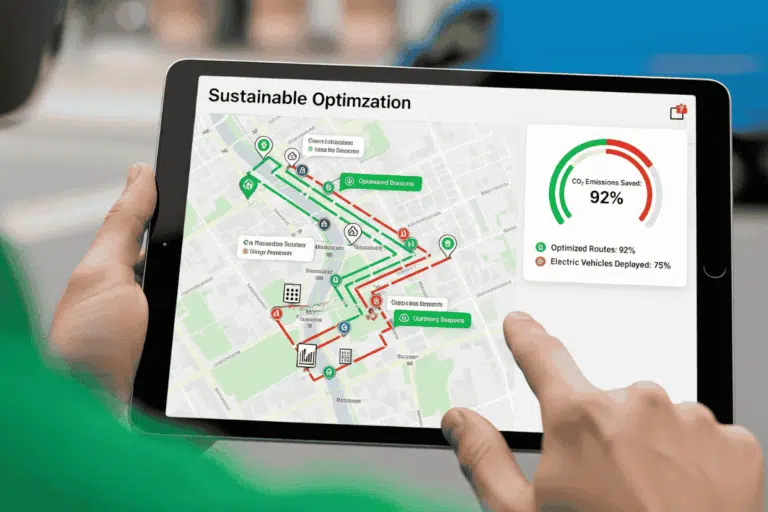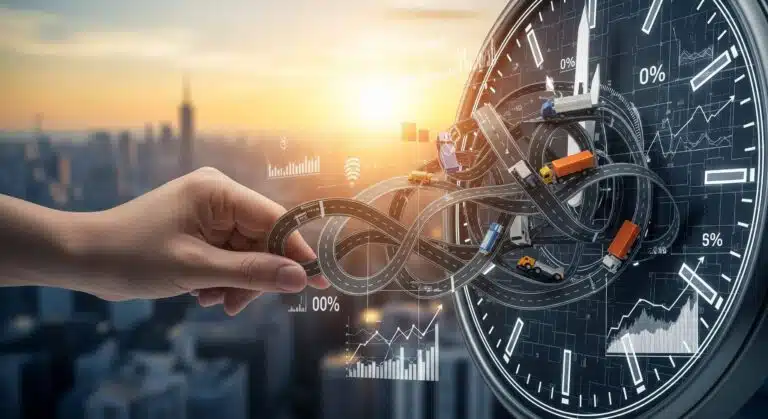As anyone in the industry will tell you, timing is everything when it comes to grocery and food delivery. And without route optimization, it’s practically impossible.
Why? Because instead of just moving parcels and doing normal delivery, you now work with perishables, tight windows, and customers who expect updates in real time.
If your routes aren’t planned properly, it’s a ruined meal or spoiled produce.
In this article, we’ll break down the most important features your route optimization software needs to handle food delivery right — fast, fresh, and fuss-free.
Why route optimization matters for food delivery
Grocery and food delivery isn’t like delivering furniture or appliances.
Fresh produce, chilled meals, frozen goods – these are time-sensitive items. And to keep it fresh, you’ll have to hit very specific windows, or else the delivery could be a waste.
There might also be higher delivery volumes during peak hours like lunch, dinner, and weekends.
And these days, customers expect speed, accuracy, and live tracking. They want to know when their food is coming; they don’t want to guess.
When all of these factors collide, manual planning won’t cut it. You need software that can handle complexity in real time.
Must-have route optimization features
There are a handful of route optimization features you simply can’t go without.
Let’s take a look:
1. Delivery time window management
Most food and grocery delivery customers choose a delivery window, and they expect you to stick to it.
Your route planning tool needs to make sure those windows are respected without overloading your drivers.
It’s especially useful when you’re dealing with lunch rushes or dinner peaks where timing is tight.
READ: Why Your Peak Season Needs Route Optimization Software
2. Real-time traffic and re-routing
A traffic jam, accident, or even a flooded road can ruin an entire run of hot food deliveries.
With real-time traffic data and dynamic re-routing, your dispatch team can respond instantly. This will keep drivers on the fastest route and keep customers happy.
3. Multi-stop route optimization
Your delivery drivers aren’t doing just one delivery at a time. They’re juggling five, ten, maybe even more on any given day.
READ: Your drivers aren’t the problem, it’s your delivery app
It then stands to reason that your software should optimize the sequence based on distance, time windows, and food type.
When done right, you can make sure chilled items stay cool and nothing spoils along the way.
4. Proof of delivery (POD)
Missing items and delivery disputes are part of the game. But without proof, it’s your word against the customer’s and that’s a fight you don’t want to get caught up in.
A solid POD system captures a photo, timestamp, or signature at the drop-off point.
This is especially useful for contactless deliveries.
5. Live tracking for customers
Customers want to stalk their orders… It’s part of the experience now!
READ: Customers stalk orders: How real-time tracking wins them over
Sending a live tracking link reduces WISMO calls (“Where is my order?”) and gives customers peace of mind.
They’ll know when to be ready, and you’ll field fewer support requests. (Your office and/or support staff will thank you for this!)
6. Driver app with delivery notes
Food delivery management isn’t always straightforward. Especially not when you have to navigate apartments, complexes, locked gates while the ice cream could be defrosting.
Your driver app should allow notes for things like “buzz #12,” or “leave by the back door,” or “call on arrival.”
Clearer instructions make faster deliveries and better customer experiences. And it keeps your drivers happy!
7. Route planning with load type consideration
I think we can all agree… hot soup and frozen berries shouldn’t ride side by side…
So, good route optimization software should account for load priority: separating frozen, chilled, and room-temp items.
It can even help with how vehicles are packed, which will reduce spoilage and keep everything intact.
Grocery and food delivery: What Locate2u offers
Locate2u includes all the route optimization features food delivery businesses actually need.
We’re talking:
- Route optimization with live traffic data.
- Delivery time windows baked into route planning.
- Real-time GPS tracking and customer notification links.
- Proof of delivery with photos and timestamps.
- Driver app with booking notes and instructions.
- Drag-and-drop interface for quick changes.
READ: Why Route Optimization Fails (Even When You Have Software)
Let’s recap
Food and grocery delivery is a game of speed and precision. You don’t get second chances, unfortunately.
The order needs to be right, fresh, and on time.
We’ve seen with this article how the right route optimization software keeps you in control, even when the pressure is on.
It turns delivery into a well-oiled machine and keeps your customers coming back for more. Because when the tech works, the food’s still hot.
About the author
Cheryl has contributed to various international publications, with a fervor for data and technology. She explores the intersection of emerging tech trends with logistics, focusing on how digital innovations are reshaping industries on a global scale. When she's not dissecting the latest developments in AI-driven innovation and digital solutions, Cheryl can be found gaming, kickboxing, or navigating the novel niches of consumer gadgetry.

